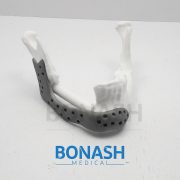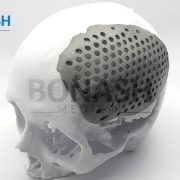Patient specific mandible implant
Customised design and development of patient specific 3D printed whole mandible implant
Mazher I. Mohammed, Angus P. Fitzpatrick, Santosh K. Malyala, Ian Gibson
In this study we assessed the design criteria for the creation of a patient specific, whole mandible implant based on a patient’s medical imaging data and 3D printing. We tailor this procedure to a patient who will undergo a mandibulectomy due to cancer infiltration of the jaw. The patient CT scan data was used to generate a 3D representation of the patient’s skull, before the corrupted mandible was extracted. We examined two approaches based on classical symmetry matching and digital reconstruction of the defect to form the final model for printing. The final designs were then 3D printed and assessed for efficacy against a patient specific representative model of the skull and maxilla, where the final optimised design was found to provide an excellent fit. Ultimately, this technique provides a framework for the design and optimisation of a patient specific whole mandible implant.
Please note:
This abstract was published on Bonash Medical’s website since its content was related to the company’s products. There is no relation between Bonash Medical and the authors. To have full access to the article, please refer to relevant reference.


